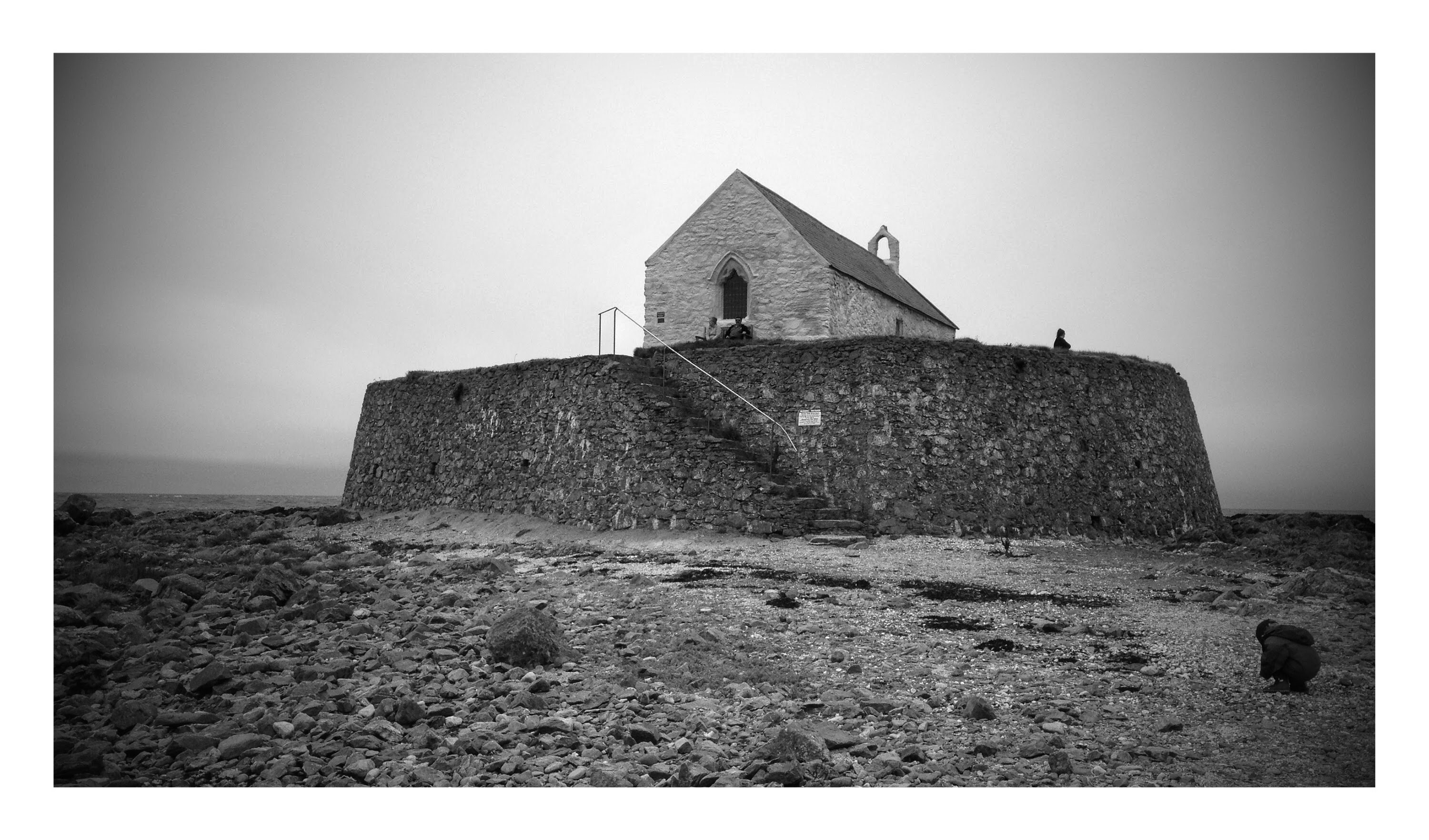The oldest biscuit in Britain? From North Wales? Never heard of it?? Well here’s the Aberffraw Biscuit history…
It’s called the Aberffraw biscuit (sometimes Aberffraw cake or Teisen Berffro) and is said to originate from 13th Century Anglesey.
Aberffraw biscuit history background
It’s a basic shortbread that comes in the shape of a scallop shell… legend has it that a Welsh king was holding court in Aberffraw – his wife was walking on the beach there and, spotting a pretty scallop shell, asked for a cake to be baked in the same form. And so the Aberffraw biscuit was born.
However, a far more realistic source for the biscuit was the famous pilgrimage to Santiago de Compostela.
This pilgrimage to the church of St James in Galicia, north western Spain, began in about the 8th Century with pilgrims wearing badges on their hat in the shape of a scallop shell.
It’s for this reason Aberffraw biscuits are sometimes also called James cakes. Under the patronage of King Gruffudd ap Cynan (1075-1137) or his son and successor Owain Gwynedd (1137-70), a stone church was built at Aberffraw with Romanesque features similar to 12th Century churches on the pilgrimage route to Santiago de Compostela.
This building is the final link to the scallop shell of St James pilgrims and the small Welsh village of Aberffraw.
The biscuits are typically made using simple ingredients such as flour, butter and sugar. They are known for their distinctive scallop shape, which is said to represent the shape of Aberffraw’s sandy beach.
Historically, Aberffraw Biscuits were baked in local homes and cottage industries. The dough was carefully shaped using a special scallop-edged mold or by hand, resulting in the recognizable scallop pattern. The biscuits were then baked until golden brown and crisp.
David Jamieson has contacted us with his thoughts on the origins of the Aberffraw Biscuit, which we are happy to add into the mix:
I’ve long thought that Pembroke Dock in South Wales was part of a longer pilgrimage from perhaps Hereford and Abergavenny to the port – then a sea voyage to northen Spain, thence to Santiago. Provisions for sea travel in the early days would have been quite primitive.
There was at leats one ship with pilgrims in medieval times – the “Mary”, year 1451 – and the Royal licence was for 24 pilgrims. Another one from Carmarthen and a third from Newport – they went to A Coruna, or at least tried to.
In the 12th Century Oliver de Merlimonde returned from the Camino to Shobdon (N W Herefordshire) and decorated some of the chapel there with engravings inspired by his journey. My real interest is how he travelled there! I suspect he went from Hereford across the valleys to Pembroke Dock… and on to northern Spain.
Current interest
In recent years, there has been a revival of interest in Aberffraw Biscuits, and they are now commercially produced by Aberffraw Biscuit Co, who strive to maintain the traditional recipe and quality, often using locally sourced ingredients and artisanal methods.
Today, Aberffraw Biscuits are cherished as a delicious and iconic Welsh treat. They continue to be enjoyed by locals and visitors alike, preserving a culinary tradition that has stood the test of time.
The Aberffraw biscuit also appeared in the famous Cassell’s Dictionary of Cookery in 1892.
To learn more about Aberffraw Biscuit Co, read more About Us.


